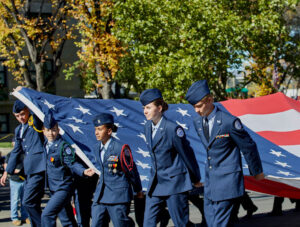Written by Scott Wilson

The military has long been a conduit for taking groundbreaking research and turning it into cutting-edge applied technologies. Fields ranging from healthcare to computer science have all benefitted from military research dollars and training. The internet you are using to read this right now came from military science funding; when you walk over to heat up your coffee in the microwave in a few minutes, that’s another civilian benefit that came straight out of military R&D.
Today it’s artificial intelligence.
While killer robots are the nightmare scenario for civilian AI advocates, they are a sober prospect for military planners to consider. Recent developments in drone warfare in Ukraine and Israel are a window into the potential for autonomous AI weaponry… both in the right hands and the wrong ones.
We know that in order to fight and win in a future conflict with a peer adversary, we must have a decisive digital advantage. AI will play a critical role in achieving that edge. ~ Air Force Chief of Staff General Charles Brown Jr.
Featured Programs:Sponsored School(s) Arizona State University - OnlineFeatured Program: Artificial Intelligence in Business, BS
Arizona State University - OnlineFeatured Program: Artificial Intelligence in Business, BS Campbellsville UniversityFeatured Program: MS in Data Science and Artificial Intelligence
Campbellsville UniversityFeatured Program: MS in Data Science and Artificial Intelligence George Mason UniversityFeatured Program: MSAIT - Machine Learning Engineering Concentration
George Mason UniversityFeatured Program: MSAIT - Machine Learning Engineering Concentration

Geopolitical competitors like Russia and China are already working on military applications for AI. China’s 2017 New Generation Artificial Intelligence Development Plan identified AI as a core technology that could narrow the gap between their military and “global advanced powers…” meaning the United States.
Those threats mean that artificial intelligence engineering in the American military and defense industry is already well underway.
But like so many other military technologies, AI is going to have enormous and beneficial civilian applications, too. And just like other fields, that means that military service members and veterans will have a unique opportunity to lay the groundwork for civilian careers in AI.
Connections Between the American Military and Society Create Opportunities for Veterans
The military isn’t the only organization that is starting to get heated up about AI. Reuters found that job postings in AI in June of 2023 were double the level from 2021, and had jumped as much as 20 percent month over month. That came at a time when tech hiring in general was still depressed.
Yet there is a real shortage of qualified workers to fill those jobs. People with the education and experience to write new algorithms or break down a problem into steps a machine can solve are few and far between.
If there’s one thing that every organization recognizes, it’s that it’s time to dig deep to develop the talent to fill those jobs.
The American military has long filled that sort of role in society. Taking young people and molding them into fit, responsible, well-trained citizens is part of the package. And the trend will continue as the workforce moves into a new world shaped by AI.
In fact, you’ll be following in the footsteps of veterans who forged the ideas and concepts of artificial intelligence in the first place. Long before there were any degrees, before the term had even been invented, the titans who laid the foundations for the field of AI were sharpening their minds using their military service and educational benefits:
- Oliver Selfridge, a Navy vet, and key researcher in the early development of neural networks
- Ray Solomonoff, a Naval electronics instructor, and inventor of algorithmic information theory
- Allen Newell, a U.S. Navy rating responsible for mapping radiation distribution at the Bikini Atoll nuclear tests, and creator of The Logic Theorist and General Problem Solver, two early AI programs
- Cliff Shaw, an aircraft navigator with the Navy’s 4th Emergency Rescue Squadron on Iwo Jima and co-programmer for The Logic Theorist
Now it’s your turn. And the military is there for you, too.
Adapt, Improvise, Overcome: As the American Military Adjusts to Artificial Intelligence, Support for Ai-Related Roles Will Expand
 The Pentagon is already right there in the mix when it comes to scaling up for the promise and challenges of AI.
The Pentagon is already right there in the mix when it comes to scaling up for the promise and challenges of AI.
DoD has had a formal Artificial Intelligence strategy since at least 2018. It was updated in 2023 as the Data, Analytics, and Artificial Intelligence Adoption Strategy.
One of the key enablers in that strategic assessment is to “Expand digital talent management.”
That means you.
Crucially, the strategy recognizes that many active and reserve force members have AI-related digital skills that aren’t directly related to their primary MOS (Military Occupational Specialty). It calls for more flexible service structures that cultivate and reward those skills, along with retraining other interested service members.
While the fruits of that strategic guidance have yet to appear in any practical terms, keep your eyes peeled—more support for paths to a military AI career is coming your way.
AI Has Been Identified as a Critical Need, and You Can Get in on the Ground Floor of Military AI Development
All of this is to say that the American military doesn’t have a lot in the way of direct training or specialization options in AI… yet.
Just because there aren’t any dedicated AI slots in the Tables of Organization and Equipment just yet doesn’t mean you can’t use service experience or benefits to build an AI career.
Our strategy outlines the approach to strengthening the organizational environment within which our people can continuously deploy data analytics and AI capabilities for enduring decision advantage. ~ Craig Martell, DoD Chief Digital and AI Officer
To do so, you’re going to have to do a little strategic planning of your own. The Pentagon is likely to meet you halfway at some point, but until then, you’re going to have to make some moves yourself.
You’ll have to:
- Learn what skills are needed to become an AI engineer
- Identify specializations and training options in the military currently that support those skills
- Find transitional and post-service support for AI engineering careers
- Develop a plan to piece together a career track that takes you through the best opportunities available
And that’s exactly what this guide is going to help you do. Whether you’re already in the service, planning to join, or have already been discharged, we’ll lay out what you need to understand about:
- The current state-of-the-art education and job requirements in AI
- Military specializations and training opportunities that align with those jobs
- Educational and transitional supports to turn your experience into legit qualifications for AI engineering positions
Understanding the Skillsets of Artificial Intelligence Engineering
AI as an exciting and in-demand field. But it’s also one that is extremely complex.
To find success in AI engineering, you’ll have to master concepts and skills like:
- Machine learning - Crafting algorithms and processes to allow machines to teach themselves from various information and data inputs
- Logic and reasoning - Before you can teach a machine to think, you need a strong understanding of formal logic and the processes used in reasoning and problem-solving
- Programming - Coding in various languages and formats is how you implement algorithms and processing functions
- Sensors and inputs - Developing the information that an AI needs to work on can involve direct input from sensor platforms like cameras, or interpreting unstructured data in various formats you will need to master
- Statistical and quantitative analysis - Using probabilistic tools to make predictions and analysis about that data requires strong mathematical and analytical training
Of course, these are not generally the kinds of things you will pick up as a fire team leader or flight deck ordnance handler.
Something you probably learned real quick about the military is that it’s aimed at the lowest common denominator. The average recruit comes in at age 21 with only a high school degree or GED to their name. Most training, or at least initial training, in every branch reflects that reality.
So you will need to develop a career path in the service that gets you a college education… the higher the better.
An Advanced College Education Is Absolutely Mandatory in AI Engineering
 Most DoD programs to support a college education are aimed at undergraduate studies.
Most DoD programs to support a college education are aimed at undergraduate studies.
That’s all well and good, because you will definitely need a bachelor’s degree. But a bachelor’s degree by itself won’t be enough. To qualify for AI engineering positions, post-bachelor’s training is required in the form of graduate certificate, master’s degree or even a doctorate.
Your game plan for putting together a career in AI will need to start at the undergrad level, though. Just like you may need to bridge a river before you take the hill beyond, your career ladder to AI engineering will run in phases.
So if you haven’t earned a bachelor’s yet, the military can help you get there. And it’s up to you to choose one that will support your long-term plan. Master’s in AI programs almost all have robust entry requirements. You need bachelor-level coursework in:
- Computer science concepts
- Basic programming skills
- Data structures and algorithms
- Calculus and advanced algebra
- Probability and statistics
When it comes to graduate studies, though, your options in the service narrow down quite a bit. A master’s degree, particularly in highly technical fields relevant to AI, is not cheap. The service doesn’t often make that kind of investment. When it does, it has a very good reason to do so.
On the other hand, there are plenty of ways that you can at least lay out the basic groundwork for those degrees.
Artificial Intelligence Skills Draw on Basic Math and Science Skills You Can Learn in Many Military Jobs
 When you look at the skills AI engineers need, you’ll notice they always include some pretty challenging science and math. But they aren’t some exotic, magical set of incantations. The basic building blocks of AI engineering are the same core mathematical, logical, and programming skills that are fundamental to many technology occupations.
When you look at the skills AI engineers need, you’ll notice they always include some pretty challenging science and math. But they aren’t some exotic, magical set of incantations. The basic building blocks of AI engineering are the same core mathematical, logical, and programming skills that are fundamental to many technology occupations.
This is what gives you your best angle on using military training and experience to build your AI job skills. You don’t need to rely on coursework, specializations, or training that say AI right on the label. A wide range of training and postings involving mathematics, computer science, or even mechanical skills can set your AI engineering career in motion.
A posting in artillery or naval fire control will immerse you in math like few undergraduate degrees can. You can learn coding fundamentals as an information technology specialist. Robotics is a hot field in AI, and even grunts are getting a chance to play with them in field tests. if you think they are building self-driving cars without folks who know vehicle performance and navigation, think again… so even working in the motor pool could be your early foot in the door to eventually working your way up to a position in AI engineering.
From Military Meteorology to the First Chatbot
 Joseph Weizenbaum had always loved numbers. As a Jewish refugee from Hitler’s Nazi Germany, when Weizenbaum’s family first came to Detroit in 1936, he had little else — while he didn’t speak English yet, algebra was old hat.
Joseph Weizenbaum had always loved numbers. As a Jewish refugee from Hitler’s Nazi Germany, when Weizenbaum’s family first came to Detroit in 1936, he had little else — while he didn’t speak English yet, algebra was old hat.
Although he learned English quickly enough, math was still his calling… enough so that he started studies toward a degree in the field at Wayne State when he graduated in 1941. Unfortunately, his studies were short-lived. Pearl Harbor came, and his new country was suddenly at war with the old.
Weizenbaum didn’t have trouble picking a side. He enlisted in the U.S. Army Air Corps and became a meteorologist, putting his math skills to use in one of the areas the very first computers were being designed to crack.
Like millions of other GIs, when Weizenbaum came home from the war, he took advantage of a new program to finish his mathematics degree at Wayne State: the GI Bill®. As part of his studies, he participated in research on some of the earliest digital computers. By 1966, with a master’s degree behind him, he was teaching at MIT, working with the AI Lab.
While there, he whipped up a basic little 200-line program designed to carry on a conversation with anyone who could type back and forth with it. He called it ELIZA.
Today, ELIZA is recognized as one of the first natural language processing chatbots, the spiritual ancestor of ChatGPT. Weizenbaum himself explored his creation and the ethical and philosophical groundings of AI in his book “Computer Power and Human Reason: From Judgment to Calculation,” which is still required reading in many AI programs today.
It’s just one example of how service in a role even as mundane as meteorology, together with the educational benefits available to veterans, can found a career that dramatically shaped and continues to shape AI development.
Creativity is one of the keys to unlocking true artificial intelligence. It’s also the key to making the most of your military experience toward building an AI engineering career.
Military Occupational Specialties (MOS) and Related Training That Intersect with AI Engineering
 On a high-tech battlefield, well-educated fighters will win the day.
On a high-tech battlefield, well-educated fighters will win the day.
So American generals, admirals, and civilian military leaders have pushed for, and gotten, a wide range of training and educational benefits for the entire force. Officer, enlisted, active duty, reserve, you name it, there are surprisingly flexible and astoundingly generous ways to get educated.
Although many of these are aimed at fulfilling the needs of the service, it’s an added attraction that they can also help you land a lucrative civilian career.
An all-volunteer force has to offer incentives to attract the best. And these days, many of the best and the brightest are aiming for careers in the field of artificial intelligence.
There are plenty of on-ramps in the service that could eventually lead to civilian jobs in AI. That means the goal going in is to land a Military Occupational Specialty (MOS) that will unlock the training and opportunities most closely aligned with AI development in the military today.
In many cases, your entire military career path is outlined by your MOS. You’ll find different branches using a variation on this term:
- Air Force - Air Force Specialty Code (AFSC)
- Space Force - Space Force Specialty Code (SFSC)
- Coast Guard and Navy - rating or designator
In all cases, the term describes the same thing: the essential job descriptions for every role in the branch. That means in all cases, they lay out in detail the type of training, responsibilities, and billets service members get.
Since there are no military artificial intelligence engineer MOS descriptions on the books yet, you’ll have to focus on the kinds of specialties that can help you develop foundational skills in the field. And there are plenty of those.
You’ve already seen how some pretty common specialties, from artillery to meteorology, can help you polish essential math and logic skills. But in today’s military, there are certainly jobs that are even better oriented toward core skills useful to AI engineers.
In general, you can lump those roles into three categories:
- Specializations that have some components involving information analysis, data science, or robotics
- Specializations focused on information technology and computer science
- Dedicated positions in decision science and analytics
Not every service offers an opportunity in each of those roles. But every branch has options that a motivated individual can pursue for the best training available in core AI skills.
Almost all of the specialties most relevant to careers in AI are jobs for officers. You won’t have any luck finding enlisted positions or training opportunities that apply directly to AI jobs.
MOS Specializations in Information Analysis: Intelligence, Drone Piloting, Missile Warning Systems, & More
 As one of the major tributaries of modern AI engineering, data science is a field to watch for career options leading to AI jobs. It’s also one that the military has been interested in for a long time, so it has clearly defined roles and training.
As one of the major tributaries of modern AI engineering, data science is a field to watch for career options leading to AI jobs. It’s also one that the military has been interested in for a long time, so it has clearly defined roles and training.
Like the civilian world, a lot of the ways that artificial intelligence is starting to percolate up into military systems is through big data analysis. So these jobs are some of the few where you can get hands-on experience with key concepts like data collection, storage, and interpretation.
They may not be focused on the technical aspects of the field, but they do offer exposure and practical expertise in using such systems. That has value when you make the shift to building them yourself.
Intelligence
Military intelligence is one of the primary specializations that is starting to dive further into big data and AI applications.
One of the keys to the eventual success of special operations forces in Iraq and Afghanistan was their rapid gathering and assessment of hot intel. Thumb drives, hard drives, and imagery gathered in a raid would be turned over immediately to intel analysts. In some cases, they could develop additional targets that could be hit that same night, before they even found out they might be compromised.
In August of 2004, SOCCOM, the Special Operations Command, hit 18 insurgent hideouts in Iraq. Two years later, with big data-infused intelligence acquisition and analysis, they were striking 300 or more targets per month… and taking apart Al Qaida with a data-driven chainsaw.
So intelligence billets today lean heavily on massive databases and integrated algorithmic processing.
On top of those skills, a unique benefit of approaching AI careers through the intelligence path is the exposure to psychology. Intel analysts are deeply interested not just in how people act, but why. And in coming to terms with the state-of-the-art in understanding human cognition, you get a leg up in ways that machine intelligence may be developed.
- Army - MOS 35 Series specialties in the Military Intelligence Branch
- Navy - Intelligence Specialist (Enlisted) or Restricted Line Officer Intelligence designator
- Navy - Intelligence Specialist (Enlisted) or Restricted Line Officer Intelligence designator
- Marine Corps - MOS 02 or 06 Series specialties
- Coast Guard - Intelligence Specialist
Other roles have less exposure to data science and automation, but in some billets may provide valuable expertise. They can include:
Remotely Piloted Aircraft Operations
If there is a field that is ripe for AI-powered autonomous operations, it’s drone warfare. The Air Force 12UX Remotely Piloted Aircraft operators are already working with machines that have extensive self-piloting potential. They are likely to be part of some of the first developments in even more AI-driven flight and weapons operations.
Surveillance and Missile Warning
Sorting out and classifying large numbers of contacts quickly and accurately is a function that is tailor-made for machine-learning algorithms. Officers working in these billets will get an inside track on AI and data science developments in space surveillance, missile warning, and target acquisition.
- Air Force/Space Force - 13S Space Operations
- Navy - Electronic Warfare Officer designators
Meteorology and Oceanography
Computers have already completely transformed the world of weather forecasting and hydrographic modeling. As machine learning algorithms are set loose on the huge data sets that are generated by weather and oceanographic monitoring systems, these officers will help develop new models and train AI systems to make forecasts and analyses.
- Air Force/Space Force - AFSC 1W and 15WX
- Navy - Meteorology/Oceanography Limited Duty Officer designator
MOS Specializations in Information Technology or Computer Science: Cyber Command, IT, & Computer Systems Programming
Cybersecurity
One of the largest fields with the clearest alignment with AI in the military today may be cybersecurity.
With a force that is heavily dependent on computers and electronic systems, the American military has had to take a lead role in cyber defense in recent decades. As attacks on critical infrastructure with real-world consequences, cyberwar specialists are getting important on-the-job experience in live operations almost constantly.
The United States Cyber Command, a joint force command better known as CYBERCOM, has lead responsibility for military cybersecurity. The command has more than 130 active teams deployed, with specialists from every service.
AI applications in cybersecurity are developing quickly, and military cyber defense billets must be up to speed.
Because cyber operations evolve quickly, you can count on getting ongoing training in any of these MOS slots. As AI becomes more prominent in cybersecurity and cyberwarfare, that will mean opportunities for cutting-edge training in the field.
These roles have the added bonus of frequently tying you in with civilian agencies that are deep into AI innovation such as the NSA (National Security Agency) and DHS (Department of Homeland Security). There are also many IT industry connection points, which can help you make connections that will pay off when you are hunting for civilian AI engineering jobs.
- Army - MOS 17 series
- Air Force / Space Force - AFSC 1B, 1D, 5C, or 17C/D/S families
- Navy - Information Systems Technician or Cryptologic Technician/Cryptologic Warfare Officer designator
- Marine Corps - MOS 06 series
- Coast Guard - Information System Technician or Intelligence Specialist
Information Technology Support and Computer Systems Programming
 There’s no such thing as a combat coder, but there are plenty of IT support jobs scattered around today’s digitized military. While run-of-the-mill computer support is a long way from the rarified air of artificial intelligence engineering, it can at least deliver some basic familiarity with computers, data management, and other core concepts that AI is built on.
There’s no such thing as a combat coder, but there are plenty of IT support jobs scattered around today’s digitized military. While run-of-the-mill computer support is a long way from the rarified air of artificial intelligence engineering, it can at least deliver some basic familiarity with computers, data management, and other core concepts that AI is built on.
A lot of military IT work is outsourced, particularly the types that are more complex and relevant in AI. But this may be the largest and most open career field for most service members interested in AI careers.
IT is also one of the few relevant military fields where enlisted personnel can get as much training and experience in technical areas as officers.
As with cybersecurity, there are many service schools and training opportunities to take advantage of in these fields. That’s on top of rigorous initial training that lays the groundwork for your MOS duties.
- Army - MOS 25/17 series specialties
- Air Force / Space Force - AFSC 1D/1B/3D (Enlisted) or 17D (Officers), and in particular the 1D7X1Z Software Development Operations role
- Navy - Information System Technician
- Marine Corps - MOS 06 Series specialties
- Coast Guard - Information Technician
MOS Specializations in Data Science or Analytics: Operations Research & Systems Analysis
Operations Research/Systems Analysis (ORSA)
The main effort in military artificial intelligence and data science so far has been in operations research.
OR is a military specialty that came along before AI or data science but is perfectly aligned with their goals and methods. Operations research officers are experts in statistical analysis and problem-solving. They apply principals of decision science and quantitative reasoning to use available data to support tactical and strategic decisions in domains such as:
- Combat
- Cyber
- Special Operations
- Intelligence
Military Operations Research: Big Data Analysis Before It Was Cool
 The idea that intensive computational analysis could play a role in military tactics came along before computers did. The field of operational research and systems analysis was pioneered during the Second World War.
The idea that intensive computational analysis could play a role in military tactics came along before computers did. The field of operational research and systems analysis was pioneered during the Second World War.
During that conflict, analysts brought together facts and data with careful logical reasoning. For example, studies of aircraft attacking submarines revealed a kill ratio of only 1 percent. Analysts checked and found the trigger depth for depth charges was set to 100 feet. But the time it took subs to dive so low after being spotted meant the charges blew up harmlessly even beneath diving boats. And boats that had more warning would often turn as they dove, meaning the depth of the charge would be irrelevant.
After the trigger depth was set instead to 25 feet, kills went up to between 7% and 11%.
Today ORSA officers use modern tools and techniques to perform such tactical analysis. Tomorrow, however, it’s entirely likely that artificial intelligence will play a major role in speeding up and finding new areas for improvement. Anyone working in ORSA will have a front-row seat to those developments.
There are also a range of ORSA billets in R&D, working on next-generation capabilities. Some of these are among the very few positions that are hands-on with military AI development at the Pentagon and with private industry. So ORSA is the most direct option that exists to get AI and machine learning expertise in the service.
Don’t forget military teaching jobs! Officers with advanced degrees may be posted to service academies or military graduate schools as instructors, like the Army’s FA47A Academy Professor… a perfect posting for academic research in AI.
These jobs are hard to get, however. A strong STEM background, usually including a graduate degree in a technical field, is required. In some cases, there are also rank and billet requirements to fill.
For Navy, Marine, and Coast Guard operations specialists, the MOS or designator are considered secondary specializations. You’ll also have a primary MOS in another field.
- Army - FA49 Operations Research and Systems Analyst (ORSA)
- Air Force - AFSC 15A Operations Research Analyst (ORA)
- Navy - Operations Analysis Specialty Career Path (SCP)
- Marine Corps - Functional MOS 8850
- Coast Guard - Operations Research and Data Analytics Special Experience Credential (Secondary Specialization)
All those choice MOS positions are restricted to officers, in every single service.
Any way you cut it; you’re looking at a long educational path to get into artificial intelligence engineering. The sooner you get started, the faster you will get there. And if you can get started before you join up, even better.
Looking At Pre-service Commissioning Options That Pay for College in AI-Related Fields
To get the best training you can in core AI engineering skills, you will need to rank up as a commissioned officer. The good news is that in any branch of the armed services you can find programs to help you get there.
Once upon a time, getting a career out of the military meant getting your high school degree and enlisting. Uncle Sam was happy to turn you into a mechanic, accountant, or medic with a few months of specialized training.
Today’s American military is different. The kind of high-tech expertise that modern weapons and communications platforms need can’t be cooked up in a few months. Recruiters are most interested in bringing on people who already have an education… or otherwise guiding recruits into degree fields that align with high-demand military specialties.
All branches are firmly interested in competing for top talent that has already built up expertise in technical fields, including artificial intelligence.
It’s still possible to join up with a high school degree and get a college education and critical technology experience. But the military is more than willing to help you get that education before you even join up.
There are two paths to getting your degree on the way to an officer’s commission on the military’s dime. Both encourage studies that are great preparation for AI engineering careers:
Path One: Earn a Bachelor’s Degree and a Commission Through the Reserve Officer Training Corps
 Far and away the most popular pre-service option to help pay for a college degree is the Reserve Officer Training Corps.
Far and away the most popular pre-service option to help pay for a college degree is the Reserve Officer Training Corps.
With options offered by the Army, Air Force, and Navy (which also allows entry options to the Marine Corps), ROTC can pay for two, three, or four years of college. It’s only available at certain partner schools. However, it can be applied toward either graduate or undergraduate studies. That means if you already earned your bachelor’s degree, it’s possible to pursue a graduate program in AI as an ROTC student.
Your benefits come with an obligation, of course: an eight-year service commitment, with at least three of those on active duty.
But another benefit to going the ROTC route is that you are far more likely to get a relevant MOS once you are commissioned if you have the right degree for that job. So in a way, ROTC is a two-for-one boost to your AI career; you can get the undergraduate degree to set the foundations, and also improve the odds you’ll get relevant on-the-job experience during your service.
While any degree will qualify you to become an officer, your odds of getting AI-related assignments will go way up with majors such as:
- Computer Science
- Mathematics
- Physics
- Engineering
In fact, the Navy ranks majors according to its needs in preference for ROTC slots. STEM programs like these are usually at the top of the list. So you both boost your odds of getting a scholarship and getting into AI-related training with those degrees.
ROTC also offers a taste of what it can be like to work in military AI development. Air Force ROTC students, for instance, can get summer postings to places like the Air Force Research Laboratory or Lawrence Livermore National Laboratory, which recently started an AI Innovation Incubator.
Path Two: Getting a World-Class Technical Education at a Service Academy
 The four service academies represent another option for getting Uncle Sam to pick up the tab on your college education. You even draw a paycheck while you study!
The four service academies represent another option for getting Uncle Sam to pick up the tab on your college education. You even draw a paycheck while you study!
- United States Military Academy at West Point
- United States Air Force Academy in Colorado Springs
- United States Naval Academy in Annapolis
- United States Coast Guard Academy in New London
Admissions standards are high, and so are expectations. But these are world-renowned colleges with excellent instructors and in-depth support.
Although the academies only offer undergraduate degrees, they also have the benefit of aligning directly with military priorities. Since computer science and AI are among those, you’ll find top-notch training in majors like:
- Data Science
- Computer Science
- Computer Engineering
- Cyber Science
- Electrical Engineering
- Operations Research
Another benefit to this route is that the academy cachet will work in your favor when it comes to getting assigned to a relevant AI MOS and billet. An academy education is an investment that the military is making in you. They want to get the most out of that investment, which means you’re more likely to end up assigned to roles and additional training that line up with your degree.
The Student Loan Repayment Program May Cover Your Debt for AI-Related Degrees
 Apart from ROTC, there’s one other path that select students can take to get the military to pick up the tab for pre-commissioning degree studies. That’s the Student Loan Repayment Program, or SLRP.
Apart from ROTC, there’s one other path that select students can take to get the military to pick up the tab for pre-commissioning degree studies. That’s the Student Loan Repayment Program, or SLRP.
SLRP is different in that you must get the degree on your own, first. And it only works if you took out loans to get it—the military isn’t going to cut you a check to refill your parent’s savings accounts if they paid out of pocket.
But if you do have outstanding loans, and a degree in a field the military needs, you can sometimes negotiate for them to take over your loan payments as part of your enlistment contract.
Only these types of loans are eligible:
- Stafford Student Loans (GSLs)
- Perkins Loans
- Federally Insured Student Loans (FISLs)
- Supplemental Loans for Students (SLSs)
- Parents Loans for Undergraduate Students (PLUS loans)
- Consolidated Loan Program Loans
Each branch has their own list of requirements and restrictions for SLRP:
Since it’s part of each individual’s enlistment contract, there is a lot of variability in how the benefit is applied. Eligible majors for SLRP change all the time, but you can bet that with a big push to bring in more people with AI skills, degrees in relevant fields are going to be on that list more and more.
Taking Advantage of In-Service Education to Build Your AI Skillset
 All of the relevant AI-related specialties listed above come with required training, up to and including master’s degrees in some cases.
All of the relevant AI-related specialties listed above come with required training, up to and including master’s degrees in some cases.
But there are also many resources for all military personnel to take advantage of for more education. Since not everyone is going to end up in the ideal MOS for AI or data science, you should be prepared to make use of other options to build your skills in preparation for your post-service life.
Military Tuition Assistance Will Pay for Off-Duty College Attendance
For starters, DoD Military Tuition Assistance (TA) offers several thousand dollars toward a college degree of your choice, pursued on your own time. The exact amount differs a bit by branch. MTA can cover 100 percent of your tuition up to $250 per semester hour. The total benefit is usually limited to around $4,500 per year, total.
You must be able to complete your studies within your term of enlistment. Each branch administers TA separately and may have slightly different rules and restrictions. In all cases, you’ll need to pursue your studies at a fully accredited American university, however.
Top-Up Pulls your GI Bill® Benefits Forward into Active Duty for Extra funding
The DoD Top-Up program allows you to pull forward some of the GI Bill® benefits you would typically get after fulfilling your service commitment in order to cover any costs over and above TA limits. That can be particularly valuable when it comes to paying for an expensive AI graduate degree.
Using Top-Up does draw down your total allocation of GI Bill® funding, however. So if you plan to use it, you need to be very serious about your commitment to the degree program.
Various Service Supports Help You Find Online Courses You Can Take with You on Active Duty
Although these are benefits you take advantage of on your own time and toward your own goals, you still need your command’s approval. There are also some practical challenges: you need access to classes and time to study.
Fortunately, many AI degrees, and most AI certificate programs, are available online. That’s also true of related degrees in computer science or engineering.
And the military offers a helping hand in finding online college options. The Community College of the Air Force is a fully accredited undergraduate school that every airman is automatically enrolled in on entry to the service. Not only does it offer credits toward an associate degree that you earn through your routine training, but it has connections to civilian schools that will accept your AAS as a transfer degree. That takes you on a direct path to bachelor’s programs in computer science, cybersecurity, or information systems, laying the perfect foundation for future AI studies.
For the Navy and Marine Corps, NCPACE, the Navy College Program for Afloat College Education, offers connections and a platform with a variety of universities offering suitable off-line remote learning options.
The Military May Send You to School for an AI-Related Graduate Degree

While there are no AI-specific graduate programs offered by military schools, there are programs packed with AI-adjacent coursework.
At the Naval Postgraduate School, graduate degrees in Applied Mathematics, Operations Research, and Computer Science offer solid grounding in many basic AI engineering skills.
The Air Force Institute of Technology (AFIT) has not just the MS in Operations Analysis noted above, but also:
- Computer Science
- Data Science
- Cyber Operations
Finally, the National Defense University’s College of Information and Cyberspace offers both degrees and certificate programs in information security and data management. These are more management than technically oriented. But the field of AI needs leadership, too.
Officers are also sometimes assigned to earn degrees at civilian institutions. When military schools don’t have the slots or the expertise needed, each branch has programs that can pay for tuition and expenses at a university that offers the right kind of graduate studies. These are:
All these programs are contingent on you having a relevant MOS, and having enough time left on your service commitment that the military can wring the benefits of your studies out of you. If you’re willing to extend your contract, however, these programs are a way to get high-value AI-adjacent college education free of charge.
Achieving Officer Status to Take Advantage of the Best AI Training Opportunities
No matter how brilliant you are, Uncle Sam is not going to send you to grad school if all you’ve got are stripes on your sleeve. All the best opportunities for building AI careers go to officers.
Fortunately, there are routes in every service to get from enlisted to officer ranks… and they often include college benefits as part of the package.
Army, Navy, Air Force, and Marine enlisted personnel have a wide range of commissioning options. While some, like the Air Force Senior Leader Enlisted Commissioning Program, require that you get the necessary bachelor’s degree on your own, most come with scholarships to ROTC. The Army’s Green-to-Gold and the Navy’s Seaman-to-Admiral 21 program both use ROTC to help you pay for school. In some cases, you may also retain your current rank and pay, which helps with cost-of-living expenses.
Picking the Best Branch for Future AI Career Opportunities
 The American military is a huge organization. As you’ve seen, there are opportunities in every service to build your portfolio toward eventual work in artificial intelligence.
The American military is a huge organization. As you’ve seen, there are opportunities in every service to build your portfolio toward eventual work in artificial intelligence.
But there are real and important differences between the branches, particularly when it comes to technology and technical training.
If you haven’t enlisted yet, and are still considering your options, it’s time to tap into your inner learning algorithms and break down the best choices based on your goals and existing education.
Consider the Primary Mission of Each Branch
First is what we might call the alignment problem.
In AI, the alignment problem is a major functional and philosophical question… how to ensure that intelligent machines have goals and interests that are aligned with those of humanity.
For service members, the alignment problem is a little different… how to ensure your AI career goals line up with the goals and interests of your branch.
For example, the major doctrinal role for the Army is large-scale sustained ground combat. While relevant and cool AI-aligned jobs exist in the big Green Machine, you always have to face the reality that you may well be reassigned to an armored division or some other mud-moving unit.
Similar things can, of course, happen in any branch. But the reality is that there are more AI-relevant jobs in some branches than others. So you can see how the odds of landing in something suitable may be better aligned in your favor in an engineering-heavy branch like the Navy, for instance.
Think About the Available Training and Requirements
Next is the training pipeline. You can find roughly equivalent specializations in several different services that nonetheless have a different sequence and availability of training requirements.
For example, Army FA49 ORSA candidates must attain an O3 rank, complete a 6-week course and then the 14-week ORSA-Military Applications Course. That means you’re several years into your commitment before you can even start in your preferred MOS. And you’re competing with others for a limited number of specialty school slots.
For Air Force 15A candidates, however, the educational requirements can be completed through an AFIT Master of Science in Operations Research degree. That can be earned on the job in some cases. With no rank prerequisite, an initial posting to AFIT as a lieutenant with a pathway to complete the degree can even be lined up as part of your recruitment contract. It’s a much faster path with broader opportunities in almost every case.
How is AI Used in Each Branch?
Finally, you should look at military uses for artificial intelligence in each branch.
 The Air Force has a lot of these, revolving around their core missions. They also have strong industry connections and a tradition of close involvement in R&D. Some of the fundamental aspects of aerial warfare are going to be radically changed by AI… and that gives the service a lot of incentive to develop AI expertise.
The Air Force has a lot of these, revolving around their core missions. They also have strong industry connections and a tradition of close involvement in R&D. Some of the fundamental aspects of aerial warfare are going to be radically changed by AI… and that gives the service a lot of incentive to develop AI expertise.
Space Force, close to the Air Force in culture and requirements, has many highly technical jobs, but so far, few are aimed specifically toward data science or AI.
As smaller specialist branches, the Marine Corps and the Coast Guard rely more on outside support… both by the Navy, and in the case of the Coast Guard, also by the Department of Homeland Security. Much of the AI development they end up using will come from those outside agencies.
There’s also something that’s harder to assess from outside the service, but that still holds a lot of weight: how popular technical roles are in that branch, and how stacked up the training pipeline is. There are more than 550 15A ORAs in the Air Force versus the Army’s fewer than 450 FA49 ORSAs. Even a quick program may not be ideal if the wait list for entry is a year long.
These are all matters to discuss with recruiters. You’ll be in a better position to make choices if you keep up with the current state of AI developments in each branch, however.
What Options Do You Have for AI-Related Training in the Guard or Reserves?
 The American military that you see on the news and the recruiting posters is just the tip of the spear. According to Department of Defense numbers from 2021, slightly over half of the total number of U.S. military personnel are in the National Guard or Reserves.
The American military that you see on the news and the recruiting posters is just the tip of the spear. According to Department of Defense numbers from 2021, slightly over half of the total number of U.S. military personnel are in the National Guard or Reserves.
Many of those individuals are also eligible for some educational benefits. And when it comes to AI, thanks to the 2023 Data, Analytics, and Artificial Intelligence Adoption Strategy, they may be in the best position to turn military service into a legit AI engineering career.
That’s because the strategy calls for leveraging current expertise and skills within the forces to build AI capabilities. And the greater age and workforce experience of troops in the Guard and Reserves make them far more likely to have the kind of building blocks the military is looking for. Some may even already be at work in the industry.
The Guard and Reserves can tap into programs like MTA, the GI Bill®, and SLRP to help extend their AI education. As DoD spins up their AI strategy, expect to see many of the incentives and specializations becoming available to Guard and Reserve members.
Taking Advantage of Veterans Benefits and Transition Assistance to Build Your AI Career Post-Service
 While it’s great if you can leverage duty assignments to build your AI expertise while still on Uncle Sam’s payroll, you already know that your every move is subject to the needs of the service. If that means watching a radar scope in Greenland instead of managing autonomous drone operations in Nevada, that’s just the luck of the draw.
While it’s great if you can leverage duty assignments to build your AI expertise while still on Uncle Sam’s payroll, you already know that your every move is subject to the needs of the service. If that means watching a radar scope in Greenland instead of managing autonomous drone operations in Nevada, that’s just the luck of the draw.
But you’re not entirely out of luck, because one of the best military benefits of all is one that comes to all service members after discharge: the GI Bill®.
This benefit has been delivering high-tech education to veterans as far back as World War II. In fact, more than a few of the founders of the field of AI used GI Bill® benefits to get the technical education they needed. If it worked for the likes of Cliff Shaw and Joseph Weizenbaum, then it can work for you, too.
Using Your GI Bill® Benefits to Build Up Your AI-Related Degree Credentials
As a practical matter, you’re most likely to be covered under the most recent version of the GI Bill®, the Post-9/11 GI Bill®. Set up to cover veterans of the War on Terror, it covers anyone who served on active duty for at least 90 days after September 10, 2001, or was wounded in action or discharged with a service-related disability.
Many Guard and Reserve troops qualify for Post-9/11 GI Bill® benefits, but also have their own unique option, the Montgomery GI Bill® with slightly different coverage.
Anyone with over 36 months of service can attend up to four years of school at any public institution with all tuition and fees completely covered. There’s a cap for out-of-state or private school tuition, but the related Yellow Ribbon Program is available to bridge the gap in most cases.
You can also get a stipend to cover books and supplies and a monthly housing allowance. That lets you really focus on your studies without worrying about overhead too much.
Best of all, the Post-9/11 GI Bill® can be applied toward graduate as well as bachelor’s degrees. So if you’ve used other benefits to complete your undergrad degree before you are discharged, that GI Bill® money is ready and waiting to sink into a master’s degree in artificial intelligence.
Don’t forget to look for special scholarship options for veterans. Many schools and other organizations offer various types and levels of scholarship support for those who served.
The Veteran’s Administration offers one-stop shopping for finding schools that accept GI Bill® benefits in the form of the GI Bill® Comparison Tool. Using the filters and search options there, you can narrow down your choices to schools you are interested in, and see what levels of support you will qualify for.
Just as important, you can use the information you find there to identify other important features. A military-friendly school will have features like:
- Acceptance of GI Bill® and full support for Yellow Ribbon program funding
- Offering credits for service experience and training
- Waiving mandatory fees for veterans or active duty personnel
- Discounting tuition rates for vets and offering scholarships
- Dedicating academic and administrative support services to vets, recognizing their unique status and benefits
- Supporting veteran student groups on campus
All of those can make it easier for you to transition from the service into a career in AI. And, naturally, you’ll want to consider all the essential features of a strong program in AI:
- Expert and experienced professors
- Strong ties to AI and IT industry companies and organizations
- Host of specialty centers and groundbreaking research programs in the field
- Strong academic support and computational resources
Tap into Unique GI Bill® Benefits Aimed at STEM Fields Like AI
The importance of core STEM (Science, Technology, Engineering, and Math) skills in the private sector today has led to a few other unique benefits that can be applied to AI engineering training.
The Forever GI Bill®, passed in 2017, created two new options to help pay for the kind of hardcore science and math skills you need in AI engineering.
The Edith Nourse Rogers STEM Scholarship is a partner benefit with your regular GI Bill® coverage that can extend it by up to six months for science and tech degrees. Since AI studies are so intensive, it’s common to take a little extra time to complete them. The Nourse Rogers scholarship lets you do it without additional costs.
VET TEC, the Veteran Employment Through Technology Education offers a separate way to get IT training. It comes out of a different bundle of funds than the GI Bill®, so you can take advantage of both. VET TEC training does have to come from a VA-approved provider, however. Most of those programs are fairly basic, but they can give you a steppingstone to the kind of qualifications you’ll need to be accepted for graduate studies in AI.
Transition Assistance Program (TAP): Using the Separation Tools the Military Offers to Make the Transition to a Career in AI
 For all that you can do while still in uniform to prep for your impending launch into the world of AI engineering, you’re not going to become an AI engineer on active duty. You can come out with some superb knowledge and transferable skills, but you still have to find a way to make that transition to your dream job.
For all that you can do while still in uniform to prep for your impending launch into the world of AI engineering, you’re not going to become an AI engineer on active duty. You can come out with some superb knowledge and transferable skills, but you still have to find a way to make that transition to your dream job.
Uncle Sam fully realizes that the transition from military life to civilian livelihood isn’t always smooth or easy. So there are plenty of programs available to help veterans take their valuable training and practical experience and translate it to post-enlistment opportunities. Those programs will work just as well for getting into artificial intelligence as any other kind of job.
These are bundled under the mandatory umbrella Transition Assistance Program. Every single military member discharged today has to participate in TAP.
The major benefit is that it explains all your other benefits. It also connects you with career counselors and puts you into workshops dedicated to figuring out how you can best transition your military expertise into AI engineering careers.
That path will be different for every vet, depending on their service, MOS, and level of education. So you can think of TAP as the missing piece to this guide, giving you exact, step-by-step plans for a career transition for you and you alone.
Get Familiar with DANTES to Get Credit for Military Training and Get Advice on Colleges
One thing TAP will get you familiar with quick is DANTES, the Defense Activity for Non-Traditional Education Support.
DANTES isn’t a benefit so much as a system to tie in all your other transition benefits:
- Counseling on college selection and the application process
- Access to your Joint Services Transcript, outlining your service training that may be accepted for college credit
- College Level Examination Program (CLEP) and Dantes Subject Standardized Tests (DSST) testing options to allow you to test into college credits for subjects you may already have mastered in the service
Those last two are particularly important, since they can get you direct credit for military training in technical skills that weren’t delivered as part of a college program. Many schools are willing to count your military training and accomplishments toward course credits if you prove you’ve mastered the subject. DANTES gives you the tools to demonstrate that mastery.
Military Service Opens Civilian Career Paths in AI Even if You Missed Related Training
 As part of the big green (or blue!) machine, you were part of a team. Even if you didn’t know the person in the foxhole beside yours, you knew they had your back.
As part of the big green (or blue!) machine, you were part of a team. Even if you didn’t know the person in the foxhole beside yours, you knew they had your back.
Although you won’t be in uniform anymore, you’ll find a similar camaraderie exists among veterans. You are bound by service. When duty called, you answered. And no one remembers that better than others who served.
So you’ll find that there is a large, often informal, group of folks who are already out there working in AI engineering who stand ready to offer advice, provide support, or make an introduction or two to help you get your career off the ground.
This is a real advantage when it comes to landing AI jobs in the shadowy defense technology sector. A security clearance and military experience are solid gold when it comes to contracting jobs. With most military data science and AI expertise currently either being outsourced or in development at private companies, those credentials plus a master’s degree are solid standing for a job application.
You’ll also find that veterans often receive preferential hiring in government jobs at all levels. So you will have an immediate leg up when applying to AI engineering positions directly with the government.
Intangible Benefits of Service Could Be the Most Important to Your Long-Term AI Career
Veterans have a few other advantages in AI engineering careers that are just as valuable but harder to quantify than the official benefits.
Those are the qualities and values that come from service itself. Employers in every field place a premium on employees who show up for work every day exercising qualities like:
- Discipline
- Initiative
- Adaptability
- Responsibility
These are core traits that military service installs in everyone, regardless of MOS or branch. AI engineers benefit from them just as much as mechanics, accountants, or firefighters.
There’s one other value you carry forward from your time in the service that is particularly valuable in AI engineering as it exists today, though. Ethics.
Service members are inculcated with a strong moral compass. Right and wrong aren’t shades of gray. You are trained to understand the difference and do the right thing to the best of your abilities.
As artificial intelligence starts to confront tough problems over privacy, discrimination, and bias, that moral compass will be needed to lead the way.











